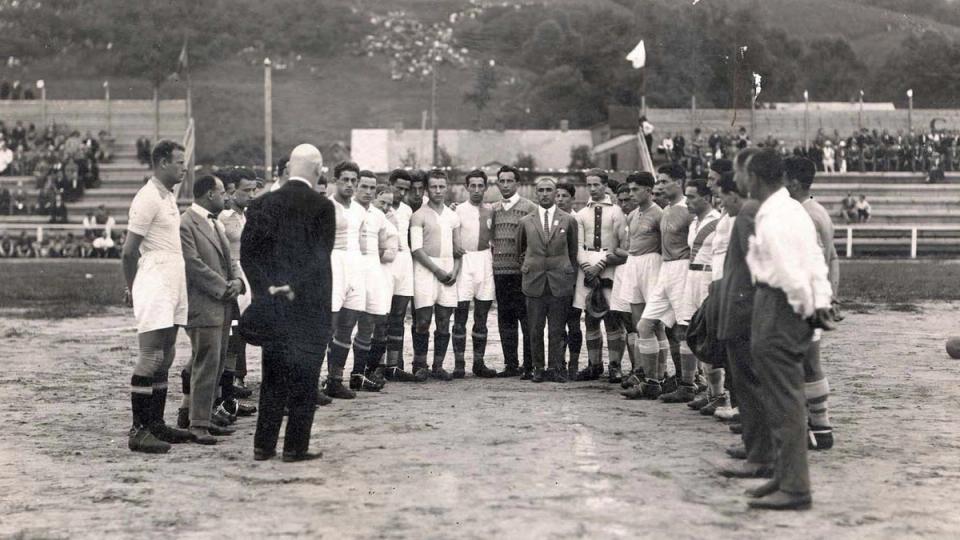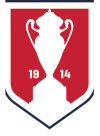International Connections & Cup Glory: The Long Road of NY Hakoah
The fascinating story of former U.S. Open Cup Champion club New York Hakoah – like so many great American tales – begins far, far away and has more than its share of twists and turns.



It was a hot day in Queens when two teams – one from New York and one from St. Louis – met for the second leg to determine the winner of the 1929 National Challenge Cup, the precursor to today’s U.S. Open Cup. “Hot” would serve to describe both the weather and the tempers on the pitch; as the St. Lous Daily Globe-Democrat reported, a fight between Madison Kennel’s Ollie Fink and the Hakoah All-Stars’ Ziggy Wortman led to both players being ejected from the match.
They weren’t the only ones for whom tempers ran high. The Globe-Democrat’s report on the match also noted that “several overanxious spectators jumped on the field and joined in,” leading to multiple police officers having to intercede. And neither were Fink and Wortman the only players who left the pitch as, late in the game, Madison Kennel’s Johnny Moore was forced off through injury. The final score of the match saw Hakoah walk away 3-0 victors — and with a 5-0 aggregate win over both legs.

Looking back at Hakoah’s win in the 1929 Cup, the match reads like a dispatch from a bygone time. But the team – taken together with predecessor New York Hakoahand another club with a variation on the Hakoah name that went on to make a further mark on the game a few decades later – serves as an unexpected bridge connecting several eras of American soccer history.
Prior to the rise of glamor leagues like the NASL, whose heyday came in the 1970s, and today’s Major League Soccer (founded in 1996), the game in the U.S. included a sizable number of teams with ties to very specific demographics. Looking back at U.S. Open Cup Finals in the middle of the 20th century reveals appearances by teams with names like Brooklyn Hispano, San Pedro Yugoslavs, and Philadelphia’s United German-Hungarians. It’s not hard to see the New York-based teams using the Hakoah name – historically Jewish clubs with the Star of David featured prominently on their uniforms, who made appearances in multiple U.S. Open Cup Finals – coming from this tradition.

But there’s also another, more recent trend that New York Hakoah can be seen as anticipating — that of teams based in North America with ties to larger European clubs. Red Bull New York and New York City FC are two well-known examples, but they’re far from alone. There was the short-lived Crystal Palace Baltimore, Rayo OKC and, just over the border in Canada, Atlético Ottawa to name a few. And it’s not hard to see New York Hakoah as an early example of this motif.
Along the way, the club’s incorporated a dynamic brand of soccer and the involvement of one of the game’s greatest coaches — not to mention impressive turnouts for home matches and multiple trips to the U.S. Open Cup Final.
***
In the beginning, there was Hakoah Wien, a Viennese soccer team founded in 1909 with an explicitly Jewish identity. (Hakoah is a Hebrew word that means “the strength.”) The organization was disbanded when Nazi Germany annexed Austria; it was reformed after World War II, but no longer fields a soccer team. In the first half of the 20th century, Hakoah Wien drew massive crowds on their many international tours, including 40,000 spectators for a 1927 match at New York’s Polo Grounds.
Several players from that squad remained in the United States, which eventually led to the formation of New York's Hakoah All-Stars, sometimes known as New York Hakoah — a team that would go on to win the 1929 U.S. Open Cup, drawing a tournament-record crowd of 21,583 as they defeated St. Louis Madison Kennels by a score of 3-0. The match took place in New York City’s Dexter Park, a facility with a long history in both soccer and baseball.Hakoah went into the second leg of the April 1929 Final with a 1-0 lead and scored two more in the second half — the first of which led to the chaos on the pitch described earlier. (“[A] near-riot was threatened until the police got busy with their clubs,” wrote the St. Lous Daily Globe-Democrat, which sounds more Gangs of New York than Bend It Like Beckham.)
It’s worth noting here that one of world soccer’s most legendary figures was also present on the pitch for Hakoah — center half-back Béla Guttmann.
Guttman is the highest-profile figure associated with both Hakoah Wien and New York Hakoah. He played for both teams during his career and went on to coach the former (in 1937 and 1938). Guttman’s own life story included some genuinely harrowing moments, like the time he spent in a Nazi forced labor camp in 1944. His Judaism made his eventual return to Europe in the 1930s an especially challenging time for him, and several members of his family were murdered by the Nazis in Auschwitz.

After the end of World War II, Guttman would go on to several high-profile coaching jobs, including stints at Porto, AC Milan and Benfica — where won two European Cups (the precursor to today’s Champions League) before infamously cursing the Portuguese club upon his departure in 1962. More recently, an acclaimed biography – David Bolchover’s The Greatest Comeback: From Genocide to Football Glory: The Story of Bela Guttman – recounted the breadth of his life story.
***
It’s worth mentioning here that looking up “New York Hakoah” in the annals of soccer can bring up the history of multiple teams — several of which subsequently combined in new configurations. At one point, the five boroughs of New York were home to both New York Hakoah and Hakoah Brooklyn.
The team that made it to the U.S. Open Cup Final in 1957 was another version of the club, known as the New York Hakoah-Americans after merging with the New York Americans. They would subsequently return to using the New York Hakoah name in the early 1960s; several players from this side played in a friendly against Liverpool on Randalls Island in New York in 1961.


In 1957 it was the team from Missouri that would emerge victorious, winning both legs by scores of 2-0 and 3-1. Hakoah’s only goal in the Final came from Lloyd Monsen, a future inductee into the National Soccer Hall of Fame and a player who represented the U.S. twice in the Olympic Soccer Tournament. (He also represented the U.S. in baseball, which is an entirely different story.)
Monsen wasn’t the only future Hall of Famer involved with that last Hakoah team. Their coach was Kurt Lamm, who led them to multiple American Soccer League titles during his time with the club — and who would go on to lead both the American Soccer League and the U.S. Soccer Federation later in his career.
***
The name of New York Hakoah is again dormant, though there’s been at least one effort in the current century to bring back the name. It was briefly revived in 2012, when a team called Hakoah began play in the New York metropolitan area — this time in New Jersey. Bergen County Hakoah did manage one high-profile move, landing Israeli airline El Al as their jersey sponsor. The club later announced that they would adopt the name of New York Hakoah — but as of this writing, their website is no longer operational and their X/Twitter account was last updated in 2016.
Whether or not the team is a going concern, New York Hakoah remains a compelling piece of American soccer’s history.
Tobias Carroll is a Brooklyn-based writer and the author of four books, most recently the novel Ex-Members. He's on X/Twitter at @tobiascarroll, and is also on Instagram at @tobiascarroll.



